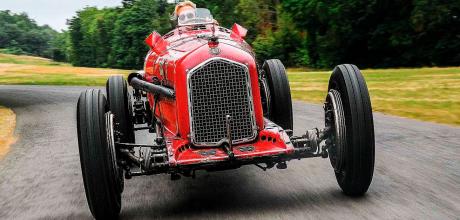1934 Alfa Romeo Monoposto Tipo B P3
Having raced throughout Europe and in the Indianapolis 500, this Alfa Romeo P3 is still enjoying an active retirement, nearly 90 years on.
Words Massimo Delbò
Photography Tim Scott
A COLOURFUL PAST – AND PRESENT
Beautifully preserved 1930s Grand Prix car
Jennie Taylor is the owner of this fabled 1934 Alfa Romeo Tipo B ‘P3’. It belonged to her late husband, the long-term Alfa Romeo collector Hugh, from 2005, and Jennie is committed to furthering his passion for chassis 50007, ensuring it continues to remain in the public eye.
SENSATIONAL 1934 ALFA ROMEO P3 – A FOUR-TIME INDIANAPOLIS RACER
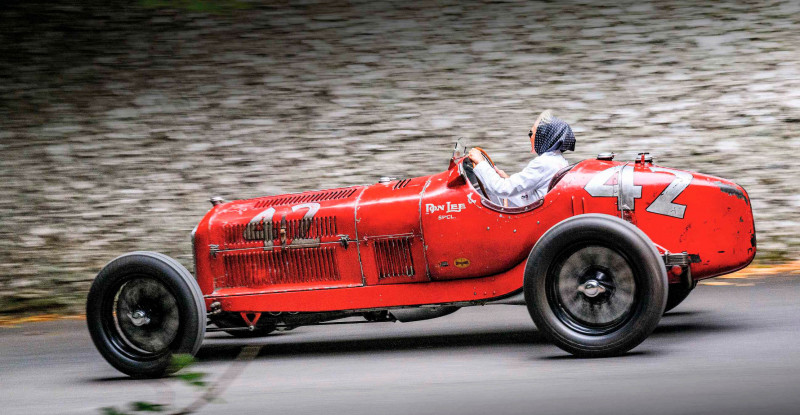
‘The car is loved everywhere,’ she says. ‘In 2019 I took her to Cavallino Classic in Florida and people were so excited to see her that they couldn’t stop thanking me for bringing her “back home” to the USA, as they said, as she was famous for her Indianapolis days. In March 2020 we went to the Amelia Island Concours and had a wonderful show there, too.’
‘THE P3 MADE ITS DEBUT IN 1932, WINNING FOUR OF ITS SIX RACES’
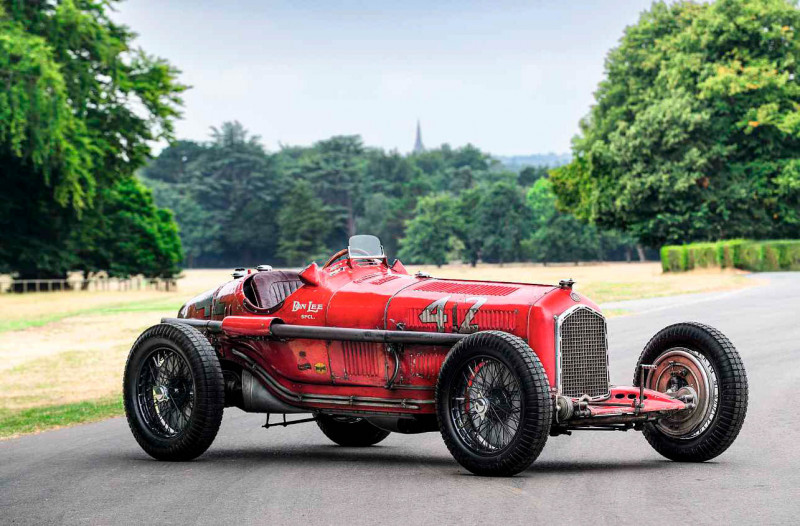
Jennie is rightly proud, because her P3 was campaigned in both Europe and the USA either side of World War Two. The origins of the Alfa Romeo Tipo B ‘P3’ date back to Autumn 1923, when engineer Vittorio Jano was headhunted from Fiat by Alfa Romeo. Underlining his genius, and the impact of his loss to Fiat, exactly 12 months later Alfa Romeo was being credited as the most advanced race car manufacturer while Fiat had announced its withdrawal from competition. Jano created the P2, the first Grand Prix car specifically designed to win races, which went on to establish much of Alfa Romeo’s legendary status as a racing car manufacturer. It was powered by a supercharged 2.0-litre twin-cam straight-eight, good for 156bhp, and would dominate the racing scene for a good six years.
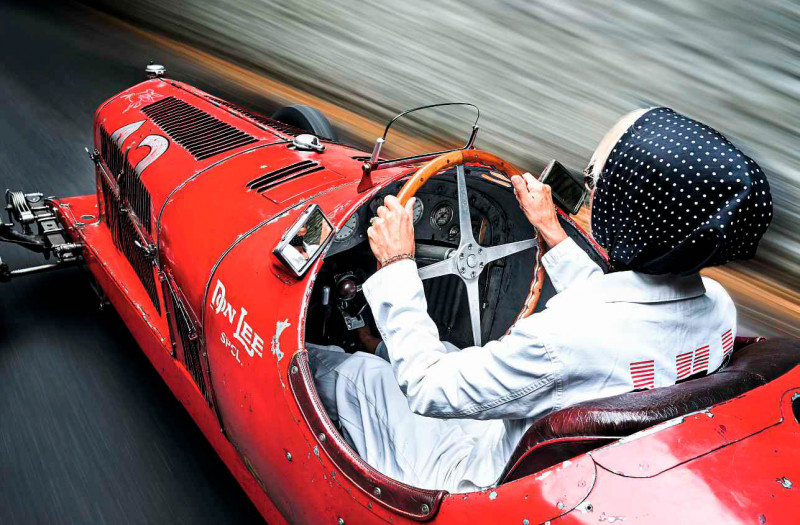
Its age was beginning to show by the early 1930s, though, and Jano began the development of two new models based on Alfa Romeo’s 1750cc supercharged straight-six. One car adopted the same bore and stroke as the 6C (65 by 88mm) but with eight cylinders, obtained by pairing two four-cylinder blocks, linked by a train of gears placed in the centre and driving two overhead camshafts and a single blower, positioned on the right-hand side. It entered history as the 8C 2300, nicknamed ‘Monza’ because of its success there.
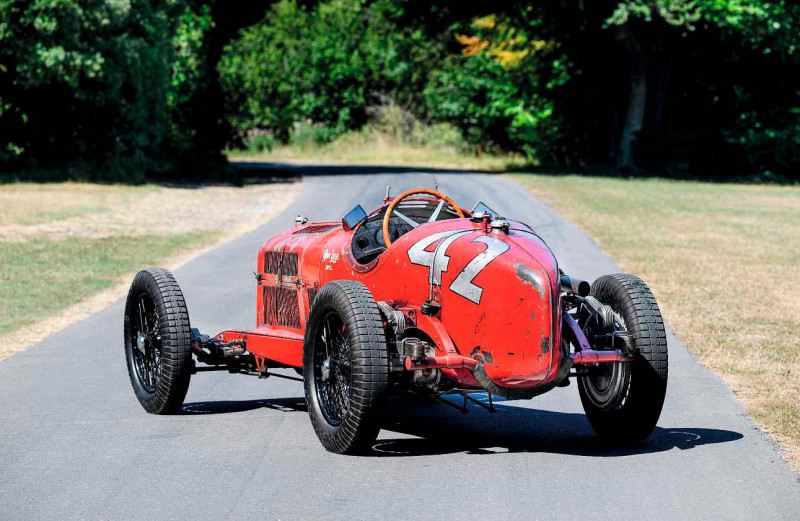
The second was the Tipo B Monoposto, nicknamed ‘P3’, which used an eight-cylinder engine of 2654cc, the same bore but a 100mm stroke, with plain bearings, timing gears mounted between the two blocks of four cylinders, and drysump lubrication. The two valves for each cylinder were inclined at 104º, and there were two superchargers on the left-hand side of the car, each supplying a separate manifold at the front and rear of the engine. The three-speed gearbox fed immediately into a differential, which split the drive through a pair of propshafts in a horizontal V-formation to each rear wheel via a pinion-and-crown-wheel set. The car’s total weight was an unusually light 700kg that, thanks to 215bhp at 5400rpm, made for an excellent power-to-weight ratio and gave a maximum speed of about 140mph.
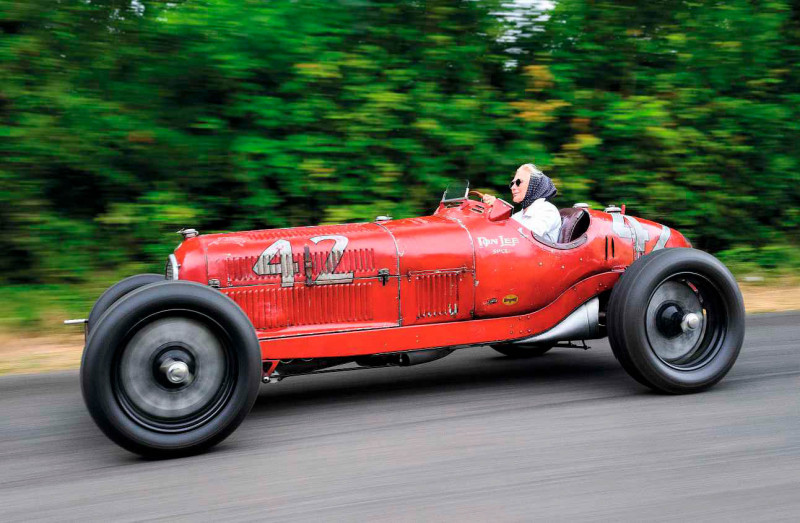
The P3 made its debut in 1932, winning four of its six races; in 1933 it was entered in only two races but won both – the financial crisis at Alfa Romeo that year forced the company to stop racing, keeping the six P3s it had built at rest, yet its development continued. In 1934, to cope with the new Grand Prix rules of unlimited engine capacity and a maximum weight of 750kg, the engine was enlarged to 2905cc (its bore was increased to 68mm), giving 255bhp at 5600rpm, the wheelbase was lengthened to 2670mm, and the tracks, wheels and body all made larger.
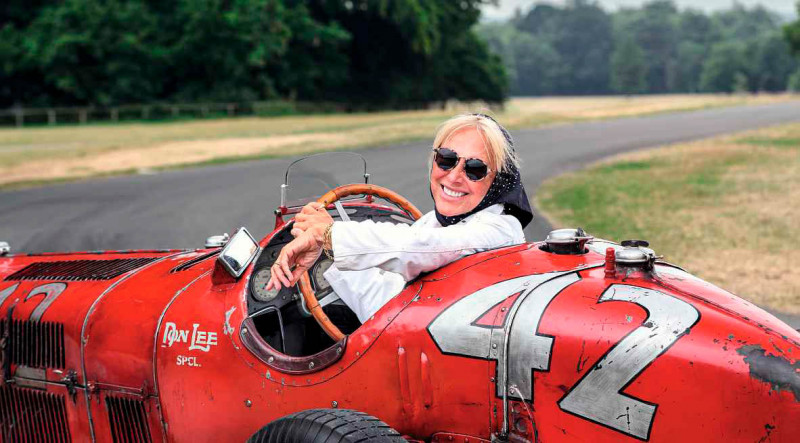
The new version, which was only 30kg heavier, featured improved brakes and dampers, and made its debut at Monaco on 2 April. Five cars were entered and one took pole position, driven by Count Felice Trossi. Its first victory came just three weeks later in Alessandria, at Circuito Bordino, with Louis Chiron beginning a string of wins, brought to an end only by the arrival of Auto Union and Mercedes late in the season.
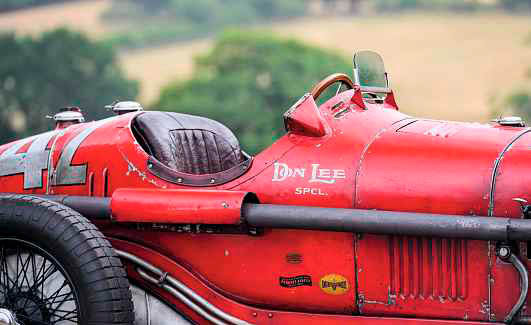
Meanwhile, the young Enzo Ferrari had been establishing his team in Modena. Scuderia Ferrari was successful from its founding in 1929 and raced mostly Alfa Romeos. By early 1932, Trossi (nicknamed ‘Didi’) had become its president, following Mario Tadini and Alfredo Caniato. He would be fundamental to the history of Enzo Ferrari.
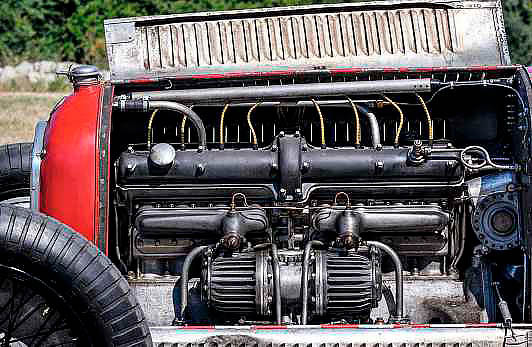
Trossi was not only a wonderful driver but a visionary, too, bringing sponsorship to the racing team and providing stability for Ferrari in its relationship with Alfa Romeo. It was in 1932 that, for the first time, Alfa Romeo had provided a Tipo B P3 Monoposto to Scuderia Ferrari, which Tazio Nuvolari raced in the Coppa Acerbo in Pescara. He won. For the 1934 season, Ferrari received the evolved Tipo B, of which nine were manufactured. Chassis 50007, which you see here, is one of those.
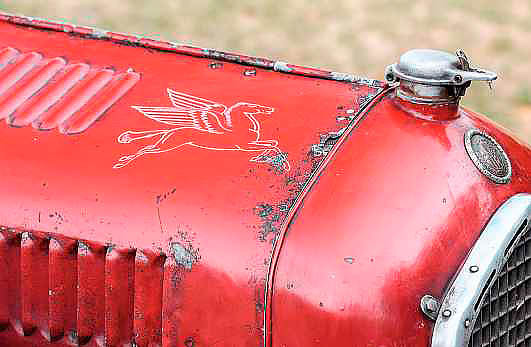
Although it is not always possible to ascertain which car was raced where and by whom, what we do know is that chassis 50007 was assigned the Scuderia Ferrari number 047 and raced during the 1934 season in Prancing Horse colours. Its drivers were Louis Chiron, Marcel Lahoux, Luigi Marinoni, Guy Moll, Mario Tadini, Didi Trossi and Achille Varzi, and the car took part in 27 races from 2 April to 21 October. The 2.9-litre P3s scored 20 victories in 1934, and their drivers filled the podium on four occasions.
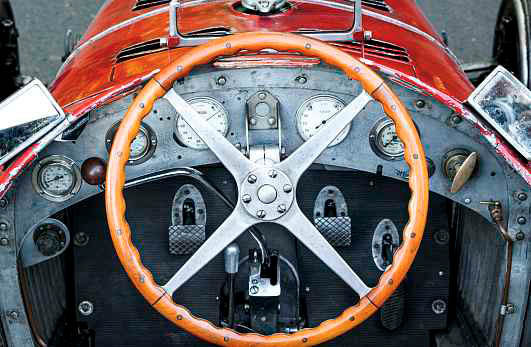
For the 1935 season, the Scuderia Ferrari P3s suffered increasingly in the face of the growing dominance of the German teams, even though the engine capacity was increased, first to 3.2 litres and then to 3.8, and the stellar team of Scuderia Ferrari included Antonio Brivio, Louis Chiron, Gianfranco Comotti, René Dreyfus, Tazio Nuvolari, Carlo Maria Pintacuda, Mario Tadini and Didi Trossi. The highlight of the season, by far, was the legendary success of Nuvolari in the German Grand Prix.
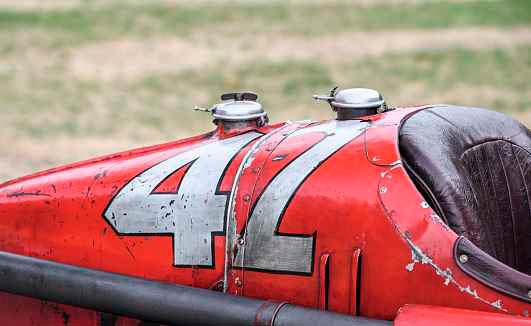
The Spanish Count Jose Maria of Villapadierna and Avecilla first saw a P3 at the 1934 Penya Rhin race in Spain, held at Montjuïc near Barcelona. He had privately entered a Maserati 8CM and was impressed by the Alfa’s speed. Villapadierna was not only a driver but also one of the wealthiest men in Spain, and his lifestyle, burnished by famous actresses such as Ava Gardner and Rita Hayworth, was often reported in magazines. He founded the Villapadierna Team, his cars painted yellow (the Spanish racing colours) with green bars (his colours), and raced in 19 Grands Prix. He was the first reported private owner of chassis 50007, which he collected in the Autumn of 1935. He raced the P3 during 1936 in the Pau, Tunis, Penya Rhin and Budapest GPs, plus the Deauville and Tunis races.
Competing drained even Villapadierna’s great wealth, and period newspapers reported on the Count’s arrest at the French border on the charge of forging his aunt’s name on cheques for the sum of £41,700 (about £3million today). And in April 1938, with Spain in the grip of Civil War, chassis 50007 found its way to the UK, via Bugatti dealer Jack Lemon Burton and then the Alfa Romeo UK importer Thomson & Taylor, which paid £625 (about £45,000 today) plus £40 for spares. The car was then sold to the USA in early 1939, delivered to Frank T Griswold of Pennsylvania.
Griswold was an enthusiastic member of the Automobile Racing Club of America, part of the community of passionate racers led by the Collier brothers, and had a deep passion for Alfa Romeo. It’s most likely that he bought the P3 during a journey to the UK and, after having it refreshed by Alfa Romeo in Milan, worked on it personally in his home workshop. That same year, he entered his P3 (repainted in red) in the 500 Miles of Indianapolis, but didn’t have the correct licence so couldn’t take part.
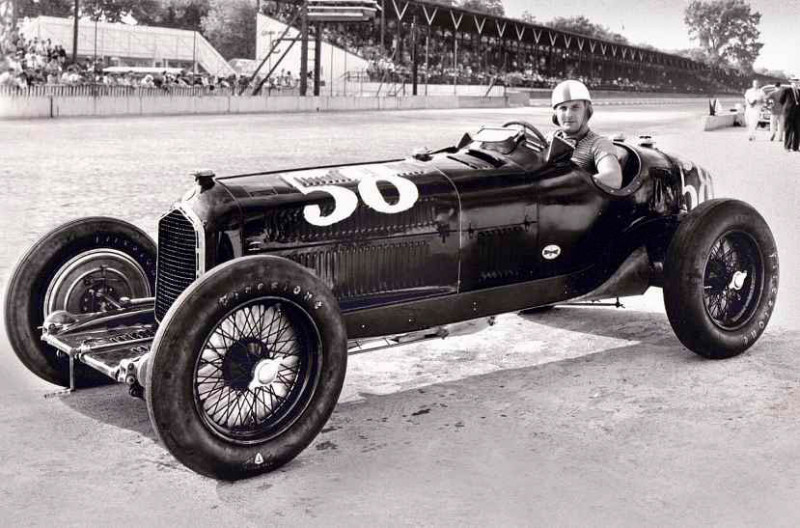
Refusing to back down, after parking the P3 in his assigned space, Griswold stormed the pitlane looking for a qualified driver, and found Luigi Gilbert ‘Louis’ Tomei. Tomei later remembered, during a 1943 interview with National Auto Racing News magazine, that he went to Indianapolis without a drive, nor a serious plan to drive, but ‘hoping to land a good mount’. He knew Griswold and, although perplexed and sceptical because of the age of the P3, he went for a lap and came back impressed not by the speed but by how well the car was tuned. He qualified 30th and remembered how the car was not easy to drive, as ‘it wasn’t designed to perform on high-speed turns on an oval, requiring constant adjustment of the steering wheel, and was very hard on the shoulder muscles’.
The car ran perfectly, if not particularly rapidly, for the whole race, suffering some spark plug problems in turns. Two-thirds of the way through, the exhausted Tomei pitted and went looking for a relief driver, finding Mel Hansen, who’d retired after crashing his own car. He completed the race and finished a respectable 15th. The P3 was then sent to Derham of Rosemont, renowned for its coachbuilding work on Duesenbergs. There it was modified, with fairings over the front and rear suspension and a new grille, which the current custodian still has in her possession.
Griswold imported a new spare engine directly from Italy and the P3 was driven in the 1940 Indy 500 by Al Miller, who qualified 30th but failed to finish because of a burntout clutch that was later discovered to have been installed with a loose bolt. The P3 continued to race after its second Indy outing and won the World’s Fair Grand Prix at Flushing Meadows, with Griswold driving.
After the war, Griswold became the North America importer for Alfa Romeo automobiles, Lodge spark plugs, Borrani wire wheels, Weber carburettors and Nardi steering wheels. Yet in 1945 he sold the 11-year-old P3 to Los Angeles-based Tommy Lee, owner of several Alfa 8Cs.
Below Tazio Nuvolari’s greatest race was at the Nürburgring in 1935, when he beat nine superior Silver Arrows cars in his P3 to win the German Grand Prix.
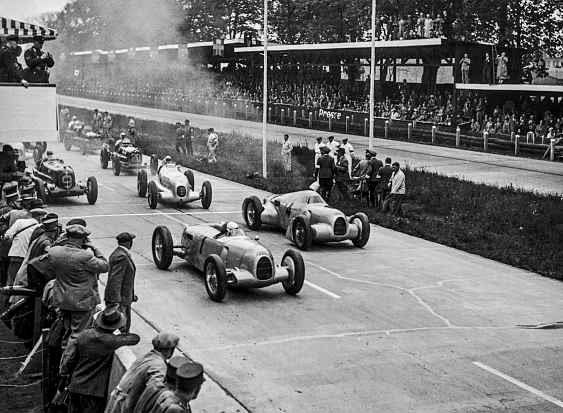
Tommy was the son of Don Lee, a radio and TV entrepreneur and the biggest Cadillac distributor on the West Coast, with 46 dealerships. Don was also the owner of Mount Lee, which he bought as the site of a television transmission tower; it’s where the famous Hollywood sign is located. Tommy Lee brought the car to Rosamond dry lakes, where it was driven by Ernie McAfee and recorded a speed of 137mph. He then entered it in the first post-war Indy 500, as the only Grand Prix car in the race, in 1946.
Modified with an 8C 2300’s more conventional transmission, the so-called ‘Don Lee Special’ qualified well, with driver Hal Cole starting on the second row, but lasted only 16 laps before retiring because of a fuel leak. In 1947, Ken Fowler drove it at an average speed almost 3mph higher than the previous year, before he had to retire on lap 121 because of a failed rear axle. In 1948 it was Luigi Chinetti’s turn, but marshals denied him a drive because they considered his tail-sliding style to be a sign of inability and so he was replaced by Fowler, who failed to qualify. It is for this race that the team fitted the car with an antenna on the tail as part of a radio system for pits-to-car communication. The P3, with five Indy entries to its name, was sold in California in 1948, two years before Tommy Lee’s death. It no longer had its original engine, as that had been installed in one of Lee’s 8Cs and passed on to friends who wanted to create a hot-rod from it. Luckily, the rest of it was still intact and bought by David Uihlein of Wisconsin, who preserved it in its original condition, as last entered at Indianapolis. Uihlein’s custodianship was fundamental in chassis 50007’s history, as it is thanks to him that the car survived mostly untouched, taken care of by somebody who appreciated the word ‘preservation’ even during the peak years of ‘overrestoration’.
Uihlein bought the original engine back in 1994, 48 years after it had been separated from the P3, and oversaw an extremely sympathetic restoration in England. The engine was rebuilt by Jim Stokes, with newly cast cylinders (the originals were cracked) and a new crankcase (the original magnesium one was kept and is still with the car). A correct P3 axle drive was manufactured and installed, too. In 1998, the car proudly sported the last of its mostly original Indy paint (in places you can still spot some of Villapadierna’s yellow beneath it) and was running again, being shown with success at several concours events.
‘My late husband spent years talking to David, trying to convince him to sell the P3, without success,’ Jennie Taylor tells me. ‘Every time, he got the same answer: “When I decide to sell her, you’ll be the first person I’ll call – but not yet.” When he finally got the call, he took the first possible flight to the USA, just to avoid any risk of losing her. ‘The P3 was driven on numerous occasions, often at Goodwood, always keeping in mind its originality and the need to preserve it. For me, it was my newspaper car as, once in a while, I loved to drive her at our old property to collect the newspaper from the main gate. Because of her loud voice, Hugh always discovered us, but never got really upset about it. I’m well aware that, sooner or later, I’ll have to let her go, but there are so many memories linked to her, including a sunrise drive at Palm Beach, that I’ll allow myself a little extra time before making that decision.’
THANKS TO Paul Russell, paulrussell.com, and to the Duke of Richmond at Goodwood, goodwood.com.
‘THE P3 CONTINUED TO RACE AFTER ITS SECOND INDY OUTING AND WON THE WORLD’S FAIR GRAND PRIX’
This page, and opposite Jennie Taylor inherited chassis 50007 from her late husband. The car still wears the paint of its Indianapolis years – it’s pictured there in 1939, with Louis Tomei at the wheel.
Left, from top Alfa P3 still wears the red paint applied for Indianapolis in 1939; owner Jennie Taylor loves driving her car.
1934 Alfa Romeo Monoposto Tipo B P3
- Engine 2905cc DOHC straight-eight, dry sump, two Weber 42 BS carburettors, two Roots superchargers
- Max Power 255bhp @ 5400rpm
- Max Torque 189 lb ft @ 3200rpm
- Transmission Three-speed manual, rear-wheel drive via dual prop-shafts
- Steering Worm and peg
- Suspension Front and rear: beam axles (live rear), semi-elliptic leaf springs, friction dampers (twin at rear)
- Brakes Drums
- Weight 730kg
- Top speed 165mph


